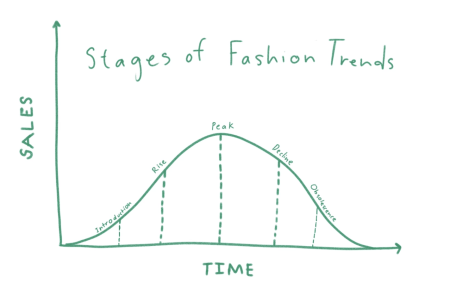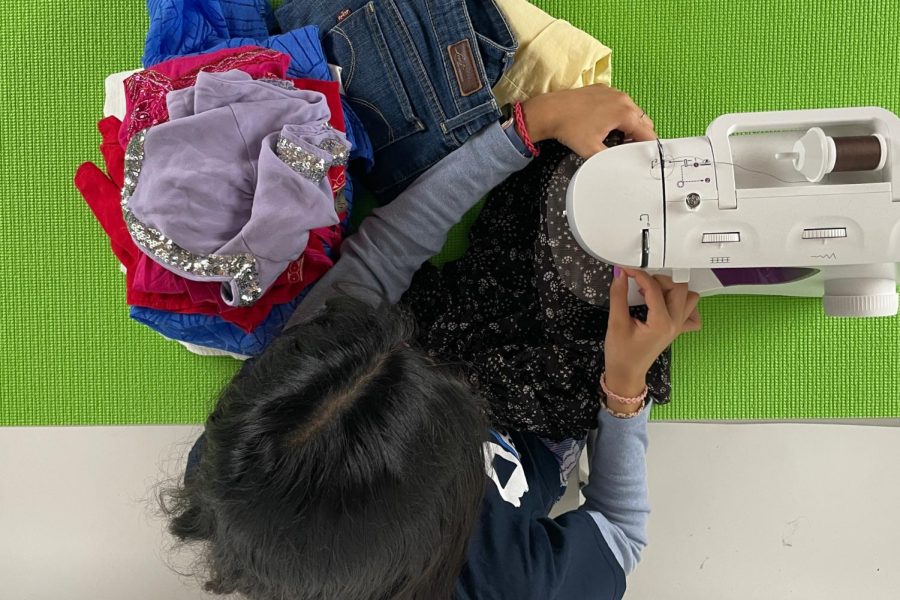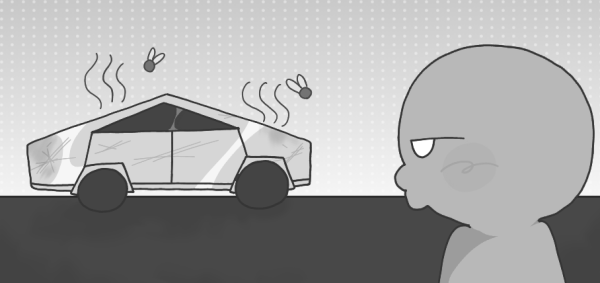Thrifting rises through social media, prompted by fashion cycles
Sometimes a thrifted piece may need some TLC, but that just makes the end result worth it.
Flip left, flip right, a quick once over for stains or unintended rips, and into the cart it goes. This is the life of many thrifters. They may find something worth saving in an old beaten up Coach bag, or, speaking from personal experience, longevity in a pair of bootcut Levi’s jeans.
With a rise in COVID-19 came a rise in social media, and with a rise in social media came a rise in thrifting. This rise of thrifting brought many things, and the majority of them were good, from reducing waste to supporting the community to saving a little money.
For many however, the main reason that people go into thrift stores is to find good looking clothes on a budget, or one-of-a-kind styles. Whereas many have been thrifting for a while, others discovered the appeal of thrifting on a popular social media site, TikTok.

The rise of thrifting began on TikTok in response to the reemergence of the past fashion trends. Many flocked to thrift stores hoping to find low rise jeans, graphic tees and velvet sets. This speaks to the cyclical cycle of fashion trends. Curated thrift store ex employee and senior, Haley Coronado saw that in past styles that have begun reemerging.
“All the 80’s and 90’s styles are coming back and so people are trying to look for the cute styles on a budget,” Coronado said.
To understand why thrifting emerged in response to fashion trends, one must first understand the nature of fashion cycles. Fashion trends can typically be sectioned into five sections: introduction, rise, peak, decline and finally obsolescence. That usually takes twenty years before this trend reemerges: but not anymore.
What began as a friendly war between skinny jeans and mom jeans sprung into something much further because these trends circled back to fashion that happened not long before. Fashion cycles started getting smaller and smaller. In many ways, this was bad because it meant that there was an increasing amount of consumption of people trying to keep up with fast-changing trends, but in others ways, TikTok was good because it started pushing others to go to the thrift store as they began seeing videos on thrift store finds.
AP Environmental Science teacher Kathleen Troyer believes that social media has been especially effective in spreading the word on thrifting because of its easily shareable nature.
At the thrift store, consumers have the ability to look for pieces they wouldn’t find anywhere else, at a price point they wouldn’t find anywhere else. In fact, one of senior Annie White’s favorite pieces that she thrifted is a pair of unique earrings.
“I found this really cool pair of earrings that were sterling silver with stones in them were really expensive, they were ocean jasper and I grabbed, them and they were three bucks,” White said.
Others may use the argument that by thrifting, clothes are taken away from those that need them but ex-Goodwill employee senior Sydney Mertens, disagrees.
“Obviously if you’re in the middle of nowhere in Wyoming, and some rich person is taking it all away to resell it, that’s annoying. But Goodwill here, we put away so many clothes, like over a thousand. There would be clothes out in the aisle for weeks before getting compressed and then sent out to the goodwill bins, and then it’s all thrown away. In the end, there’s so many clothes being put out in one day that I don’t really think that that’s true,” Mertens said.
In the sustainability view, Troyer recommends consciously looking into where the money and clothes go when thrifting.
“Certain companies that people donate to, they’re for profit and so they are selling it and making money off of it,” Troyer said.
While thrifting isn’t the most effective way to tackle climate change, if done by enough people, thrifting can scale back the effect of the fashion industry on the climate, even by a little bit, from utilizing fewer fossil fuels to less waste overall.
“From an environmental perspective, thrifting is fantastic because something that would otherwise be tossed into the garbage finds a new home, a new life and a new purpose,” Troyer said.
Though sustainability remains a good side effect of thrifting, the main reason that many chose to thrift is the unique clothing.
“I like the things that I find there better, they are cheaper and it feels better to shop secondhand… everything is very unique, it’s really cool to just go through and hunt,” White said.
“I mainly go because it’s cheaper and I like the clothes I find there, like when I went to the Goodwill bins, I found cute sweatshirts,” Coronado said.
The most important thing brought on by the rise of thrifting was the ability to shop for one’s own fashion preferences. Now at thrift stores, you may see fast fashion imitating what was popular not too long ago, like the House of Sunny dress or crochet color block sweater that was popular not too long ago. Or you might see other things like a pair of bell-bottom Levi’s jeans or in White’s case, a pair of one-of-a-kind earrings.






![In this documentary, you will learn how violins are made. All music is in the public domain:
Music Produced by Deutsche Grammophon, Medici TV, Heifetz Institute, and Queen Elisabeth competition
Paganini, Caprice No. 24 [Song recorded by Jasha Heifetz]. Heifetz Institute. (Original work published 1817)
Paganini, Caprice No. 24 [Song recorded by Jasha Heifetz]. Heifetz Institute. (Original work published 1817)
Bartok, Sonata No.1 for Solo Violin [Song recorded by Kevin Zhu]. Queen Elizabeth Competition. (Original work published 1944)
Paganini, Violin Concerto no. 1 [Song recorded by Philippe Hirshhorn]. Queen Elizabeth Competition. (Original work published 1819-1825)](https://southblueprint.com/wp-content/uploads/2025/05/Screenshot-2025-05-07-122429-600x334.png)

